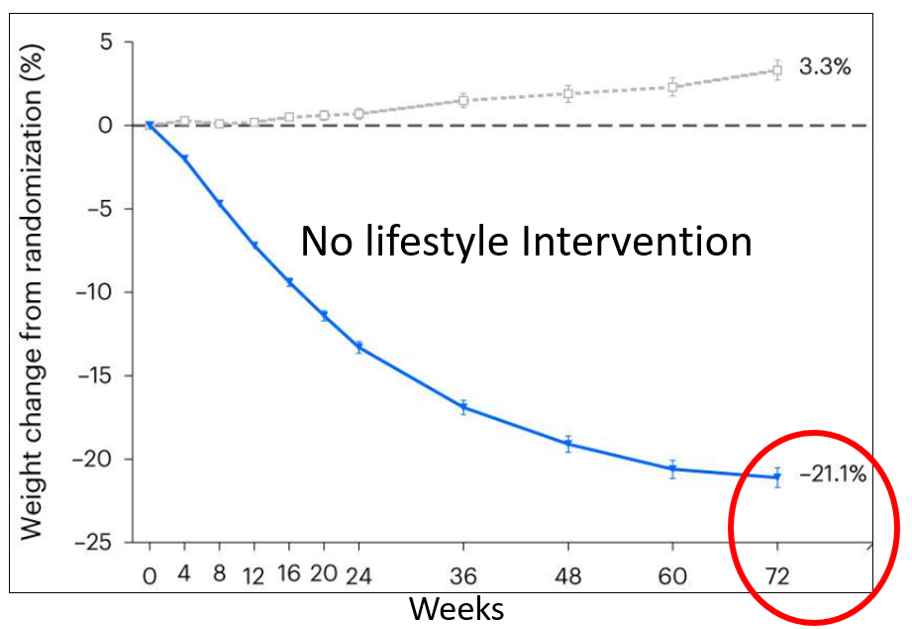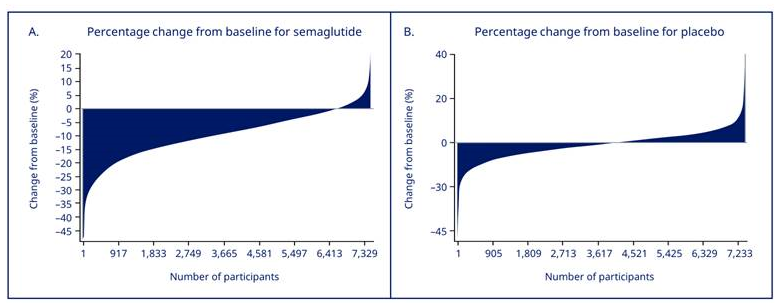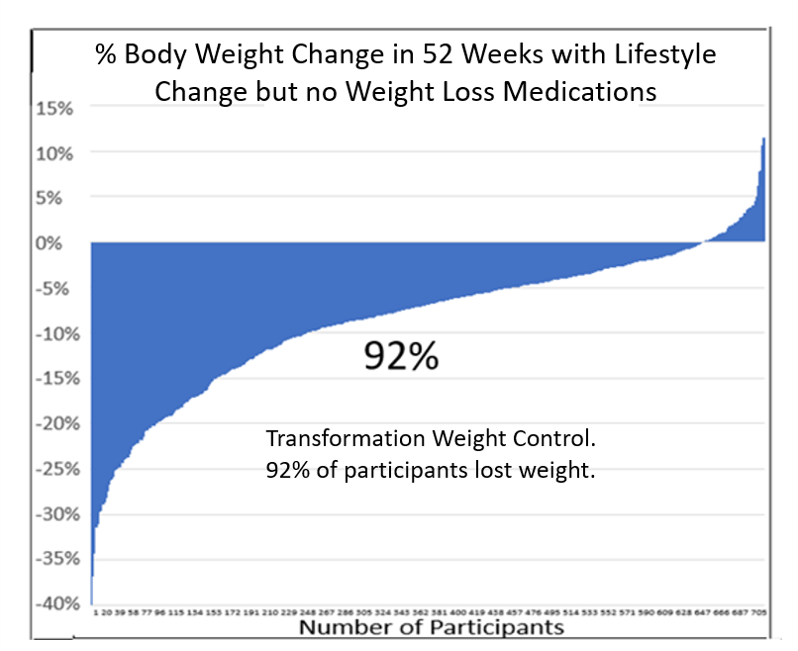
by Richard Weil M.Ed., CDE
Transformation Weight Control
www.transformationweightcontrol.com
When I first read the package inserts for Wegovy and Ozempic, both semaglutide and GLP-1 drugs for weight loss (see images of the package inserts below), where they say that a reduced calorie diet and exercise (i.e., diet plan for weight loss and exercise), I thought that the FDA made them write that for any weight loss medication or weight loss pills. But as I’ve observed over the past year, the participants in our weight loss program who experience the best weight loss results, that is, the best weight loss plan, are those who engage in a diet plan for weight loss and exercise. And research backs this up too. So, the package inserts posted here mean business!

Optimize GLP-1 Weight Loss with Diet and Exercise
In our group sessions, we always emphasize a diet plan for weight loss, and exercise, at the very least, to build muscle. You can lose up to 35% of your weight from muscle even if you aren’t using a weight loss medication or weight loss pills (you always fat and muscle when you lose weight). One of the concerns with a weight loss medication is the loss of muscle as the result of more rapid and larger amounts of weight loss than people are used to experiencing. Wegovy weight loss and Ozempic weight loss, for instance, can cause more than 35% of your weight loss from muscle. This is why exercise, and especially resistance exercise, is so important when you use a weight loss medication; you want to preserve and even build muscle while losing weight.
Proving the Diet and Exercise plus GLP-1 Approach
And then I saw these graphs in the journal Nature Medicine (Wadden et al 2023) about the effects of tirzepatide and lifestyle intervention. Tirzepatide is Zepbound and Mounjaro, they used Zepbound in the study since it’s FDA approved for weight loss. 

4 Major Benefits from Losing 3.9% more Body Mass
You don’t have to be a statistician to understand it; I’ll interpret it for you. In a nutshell, what it means is that tirzepatide combined with a lifestyle intervention (including a diet plan for weight loss and an exercise program) is the best weight loss plan. Here’s why. The weight loss at week 72 of the study without a diet plan for weight loss and an exercise plan was 21.1% of initial body weight (see the red circle on the graph on the left). For the study that included a lifestyle intervention in the graph on the right (i.e., a diet plan for weight loss and an exercise plan), the weight loss was 25.0% of initial body weight, a difference of 3.9%. In other words, the best weight loss plan included a diet plan for weight loss plus exercise, compared to no diet plan or exercise plan. Now, I know that a 3.9% difference might not seem like much, but if you consider a 250-pound person who loses 3.9% more weight with a proper diet plan for weight loss and an exercise plan, compared with no diet plan for weight loss or an exercise plan, that’s a difference of 9.75 pounds. Just an average of 3.9% weight loss (9.75 pounds) that the subjects experienced in this study is associated with many health benefits. Three of the best benefits will cause your:
- Blood glucose (sugar) to improve,
- your insulin sensitivity to improve, and
- your blood pressure to improve.
- And not only that, but for every pound you lose, it’s 4 pounds of weight off your joints. So, if you lose 9.75 pounds, that 39 pounds less stress on your joints! Considering a liter bottle of water weighs about 2.25 pounds, that means that you’re carrying the equivalent of 17.3 fewer liter bottles of water. That’s a lot of stress off your joints! Imagine carrying all these bottles of water!

More Evidence!
And then I read a study by Ryan et al in the May 2024 issue of Nature Medicine. What it shows is the weight loss of 7329 participants in the study. The graph on the left (see below) below are subjects using semaglutide (Wegovy and Ozempic), and the graph on the right is placebo. Now, each graph looks solid blue because each of the subjects’ weight loss, and weight gain, is on the graph, and when you have so many lines of subjects, the graph tends to combine together into one big color. The semaglutide graph on the left shows that approximately 90% of the subjects experienced weight loss using a weight loss medication (i.e., GLP-1 drugs for weight loss). Thos subjects are below zero on the vertical axis of the graph, and everyone who gained weight is above zero. The graph on the right is the placebo group (not using a weight loss medication). It looks like about 50% of the subjects had weight loss, and the other half gained weight. What struck me the most about these results is how identical the results are to our weight loss graph of participants in our program (TWC) who were not using weight loss medications (neither GLP-1 drugs for weight loss nor weight loss pills).

Your Takeaway
The take-away from all this information, and this blog, is the following. The information presented here, and the research, suggests that there is a strong possibility that when you combine a weight loss program using a weight loss medication or one of the weight loss pills, with a weight loss program using a traditional lifestyle change without medications (i.e., a group of individuals using only a diet plan for weight loss and exercise), that the results will add up together to cause the best weight loss plan.
Inspiration
This is all very good news and I hope it inspires all of you who are using weight loss medications (i.e., GLP-1 drugs for weight loss or weight loss pills), to incorporate lifestyle change, including both a diet plan for weight loss and exercise too. And for those of you who are not using weight loss medications, I hope it inspires you to also adopt a diet plan for weight loss and exercise plan too! Everyone will be well served if you do!
I welcome your comments.
©️ 2024 Richard Weil, M.Ed., CDE All Rights Reserved.